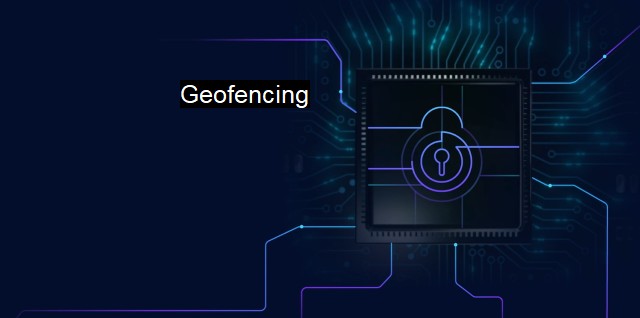What is Geofencing?
Geofencing as a Cybersecurity Solution: Protecting Sensitive Data from Unauthorized Access and Data Breaches in Business and Enterprise Networks
Geofencing is a pivotal aspect within the realm of cybersecurity and antivirus systems that continues to broaden its plethora of applications across global businesses and industries. Functioning as an intricate location-based service, geofencing employs spatial computation using technologies such as GPS, RFID, Wi-Fi, and cellular data to delineate a virtual boundary in the real world. What makes geofencing unique amidst other location-based services lies in its ability to trigger automated actions, send notifications, or implement security policies when a device enters or leaves the geographically defined area.Geofencing operates as one of the most progressive and effective ways to ensure organizational data's safe-keeping and integrity in the wake of cyber threats. Heavier dependence on electronic data and a shift towards virtual workplaces have been coupled with an increase in cybercrimes, echoing the need for more advanced data protection strategies, among them geofencing.
Exploring the functionality of geofencing with imagine a particular geographical region defined as the authorized access area for specific data files on a network. Incorporated geofencing algorithms can track the location of users seeking access to those files i.e., if the user-device is outside the predefined boundary, then access is denied. This automated response system serves as the backbone of geofencing application, it either fulfills security protocols to automatically modify privacy settings or send alert notifications when any device breaches the defined boundaries.
A tangible example of such application is in the banking industry: certain operations can only be performed within the geographic confines of the company, e.g., money transfers or critical data alterations.
Geofencing also works alongside other cybersecurity policies to maintain a secure, streamlined workflow within the organization. if an employee unwittingly ventures into a malicious location-based cyber trap or ‘Red Zone’ while connected to the company’s digital resources, immediate alert systems are triggered- either blocking access or bombarding the IT security team with notifications.
Concerning antivirus systems, geofencing introduces new paradigms to mitigate threats related to location-based malware components. A cyberattack maneuver like GPS spoofing can falsify a device’s geographic location, tricking the operating system and antivirus software into believing they are in a legitimate location. On an infected device, trojans or other harmful software might activate depending on their geographic location to circumnavigate traditional antivirus shields. To confine such threats, antivirus geofencing is incorporated to block harmful geographic-triggered actions rendering the device non-functional within blacklisted geographical zones.
Besides creating geofences for security measures and antivirus systems, geofencing also allows organizations to implement granular privacy control for applications. Users can designate app permissions and attributes based on physical locations – limiting functions and operations when they leave or enter a geofence.
Nonetheless, despite its manifold benefits, geofencing has raised some concerns. Devices that rely too heavily on location data may risk exposing this information if breached, and notification spamming from excessive geofences could lead to users ignoring essential alerts. privacy concerns arise from the collecting and storing of mass location-centric data.
In nutshell, geofencing in the context of cybersecurity and antivirus programs embodies a meticulous integration of technology and procedure providing an additional layer of protection. even while combating threats ranging from unauthorized data access to sophisticated malware attacks, sufficient caution and foresight are necessary to avoid creating new vulnerabilities and risks, encapsulating that balance makes the best cybersecurity strategy.

Geofencing FAQs
What is geofencing and how does it relate to cybersecurity?
Geofencing is a technology that creates a virtual boundary around a geographic area using GPS or RFID. It can be used in cybersecurity to limit access to sensitive data or control access to certain networks or applications based on the location of the user or device. This helps prevent unauthorized access and protect against cyber threats.How can geofencing be used to enhance antivirus protection?
Geofencing can be used to enhance antivirus protection by creating a virtual boundary around a network or device, allowing antivirus software to block traffic from outside the geofence. This prevents malware and other cyber threats from entering the network or device, thereby reducing the risk of infection.Are there any privacy concerns associated with the use of geofencing in cybersecurity?
Yes, there are privacy concerns associated with the use of geofencing in cybersecurity. Geofencing requires location data, which can be sensitive personal information that, if mishandled, can compromise privacy. It is important to ensure that proper measures are in place to protect the privacy of individuals and to comply with data protection regulations.What are some of the benefits of using geofencing for cybersecurity?
Some of the benefits of using geofencing for cybersecurity include enhanced access control, improved threat detection and prevention, and better compliance with data protection regulations. By limiting access based on location, geofencing helps prevent unauthorized access or exfiltration of data. It also allows for faster detection and response to threats by focusing on the area within the geofence. And finally, geofencing helps ensure compliance with data protection regulations by restricting access to data based on location.Related Topics
Mobile device management Network segmentation Behavioral analytics Endpoint protection Firewalls
| | A | | | B | | | C | | | D | | | E | | | F | | | G | | | H | | | I | | | J | | | K | | | L | | | M | |
| | N | | | O | | | P | | | Q | | | R | | | S | | | T | | | U | | | V | | | W | | | X | | | Y | | | Z | |
| | 1 | | | 2 | | | 3 | | | 4 | | | 7 | | | 8 | | |||||||